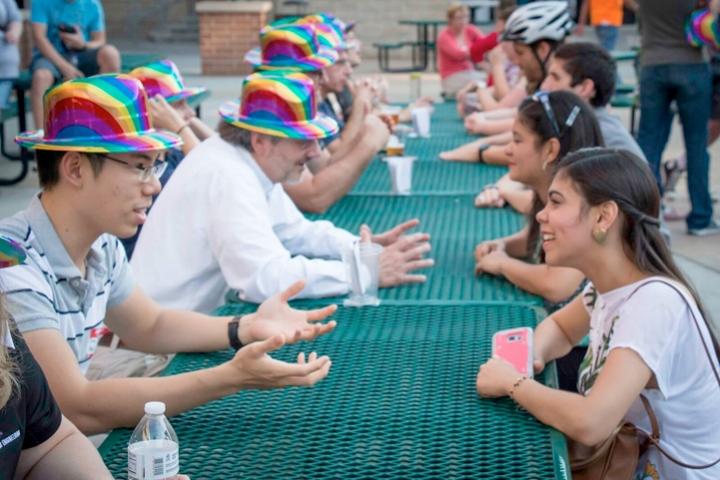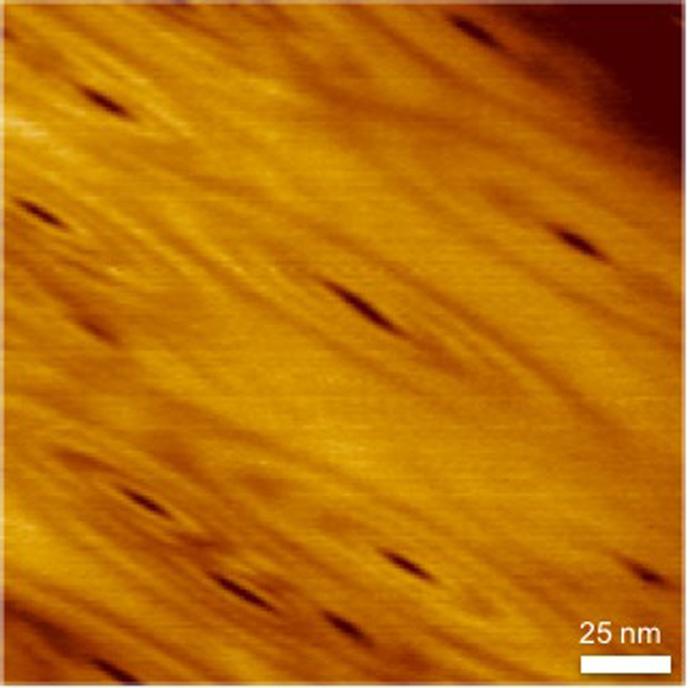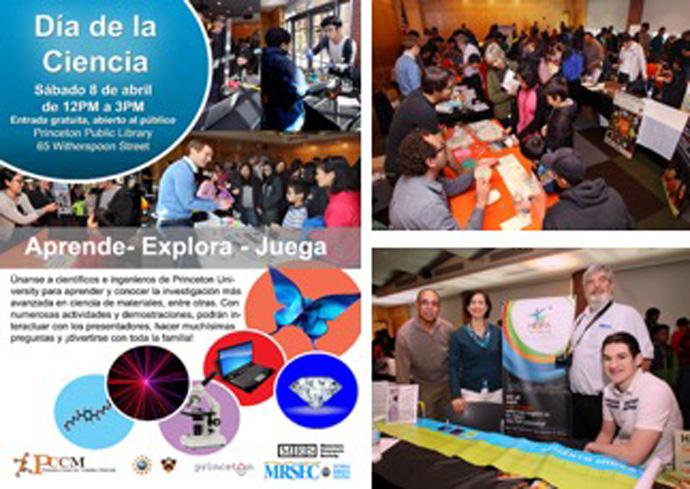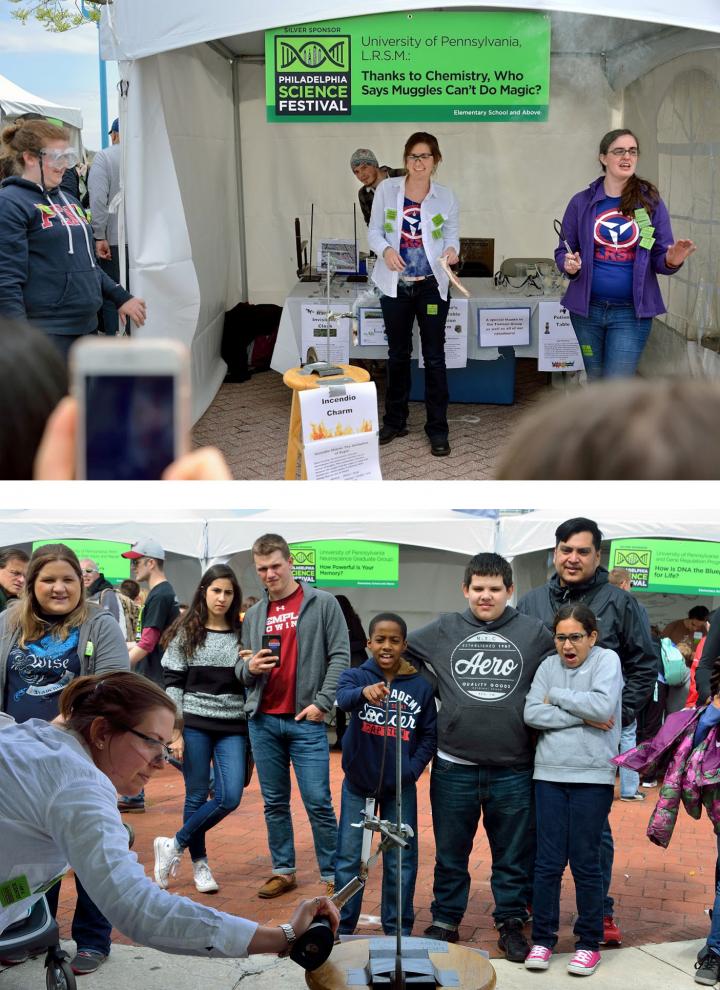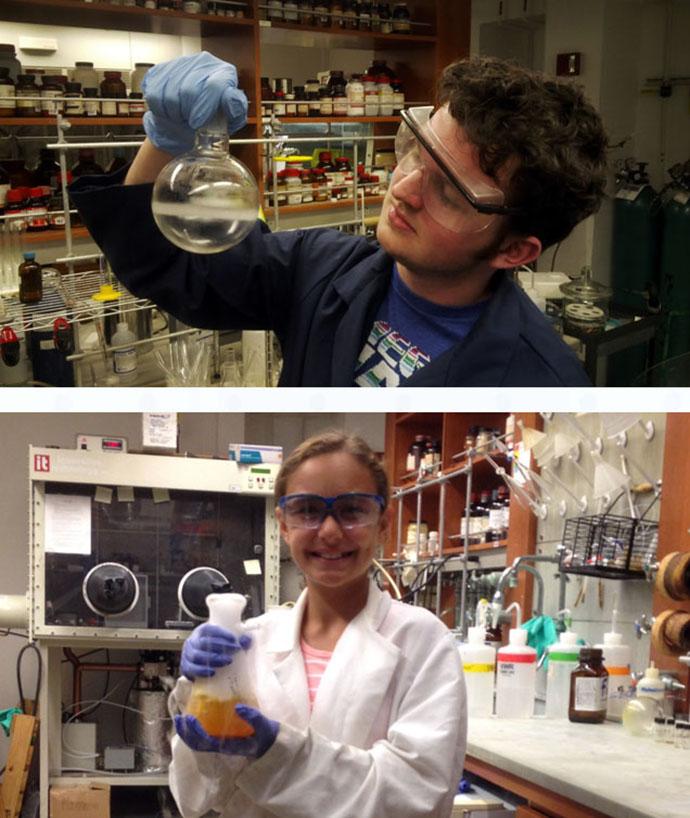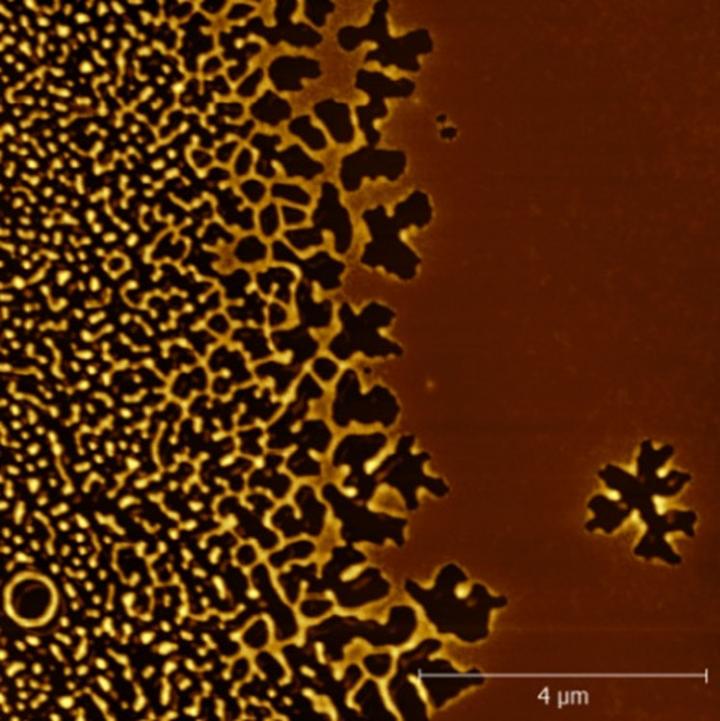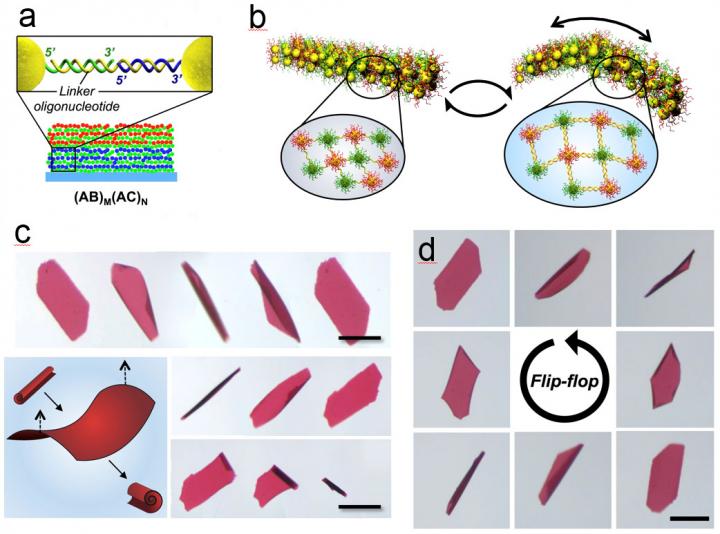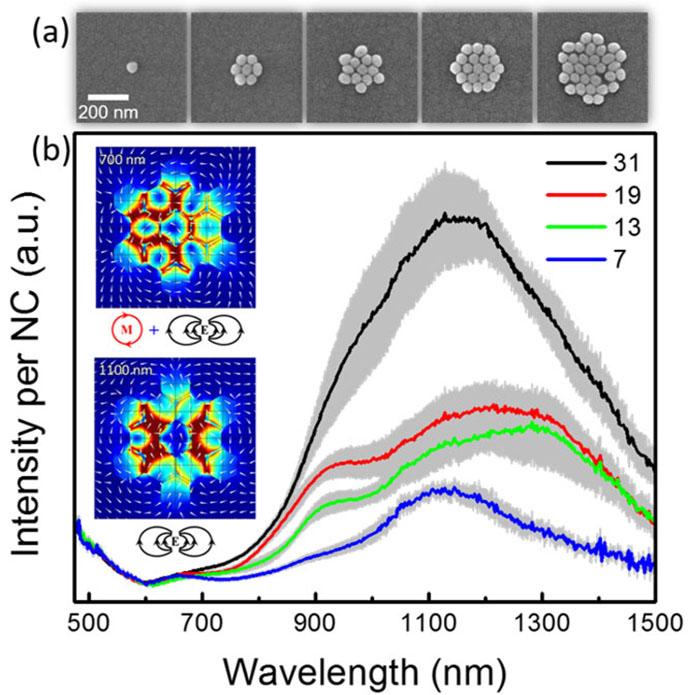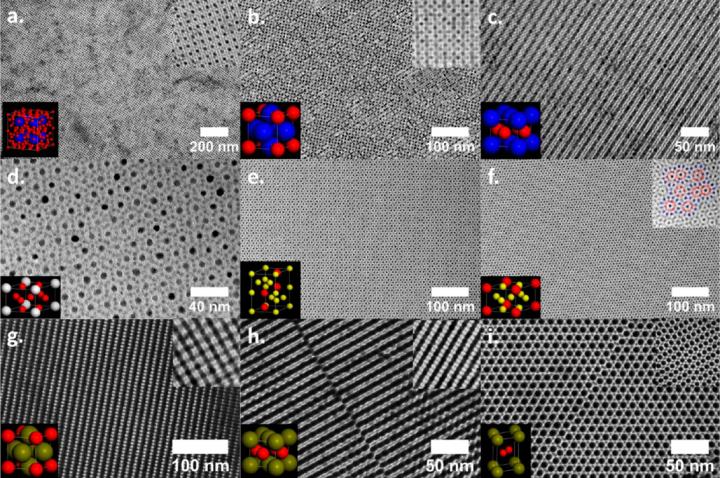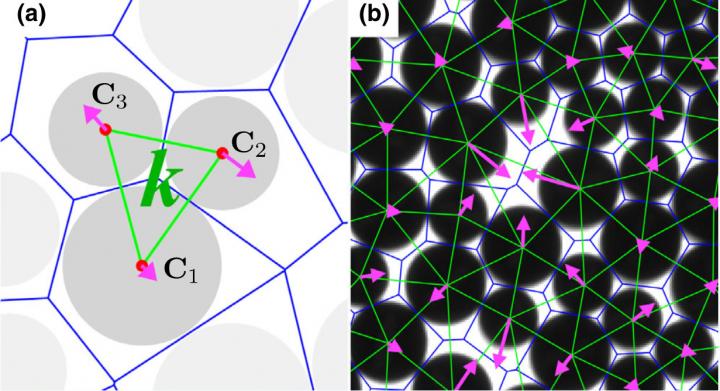Program Highlights for year 2017
Nebraska MRSEC sponsored and organized Science Night Live!, a unique event that created opportunities for Nebraska scientists to engage the general public with science in ways that challenged stereotypes about who scientists are, how science is done, and why basic research is valuable.
Interactions among electrons can give rise to a variety of exotic quantum phases in solids. An intriguing example is the formation of “nematic” electronic states, whose wave functions break the rotational symmetry of the host material.
On April 8, 2017, PCCM held its first Día de la Ciencia at the Princeton Public Library. Forty scientists, mostly PCCM members, at 20 tables, met with over 500 members of the community.
The Philadelphia Science Festival is an annual nine day celebration of science aimed to engage and excite kids of all ages. Each day there are multiple events building up to the Science Carnival, which was held on April 30th, 2016, and attracted approximately 55,000 attendees.
For many years now, MRSEC-affiliated faculty have accepted high school students into their labs during the summer, or on weekends during the semester, to undertake research projects that are supervised by a post-doctoral scholar or a senior graduate student.
Measuring correlated dynamics in molecular glasses: Properties of molecular glasses change as they are made into nanometer sized films. Fakhraai and Riggleman showed that when the film thickness is reduced below 30 nm, the solid glass films become liquid-like and flow. This results in dewetting as shown in the figure.
The ‘micro-origami’ approach to making microrobotic devices is to form thin films that can fold themselves into desired, dynamically transformable shapes.
Nanocrystal “molecules” or “oligomers”:
precise-number assemblies of nanocrystals with well-defined geometrical arrangements.
IRG-4 self-assembles, models, and measures these plasmonic metal nanocrystal oligomers in order to tailor their optical properties.
Penn-COMPASS Partnership: IRG4/Solvay/CNRS
IRG-4 creates new forms of matter by assembling nanometer-sized crystals into large, ordered, complex assemblies (nanocrystal superlattices.
Murray (IRG-4) and Donnio (CNRS) have synthesized a library of molecules (polycatenars) that enable new kinds of nanocrystals and superlattices.
Broader Impact
Disordered packings like sand piles and metallic glasses have arrangements of their constituent particles that appear very similar to those of a liquid. It is a very hard and long-standing problem to be able “look” at the particle arrangement and tell if the the system is rigid, and where flow will initiate if the system is deformed.
Pages

